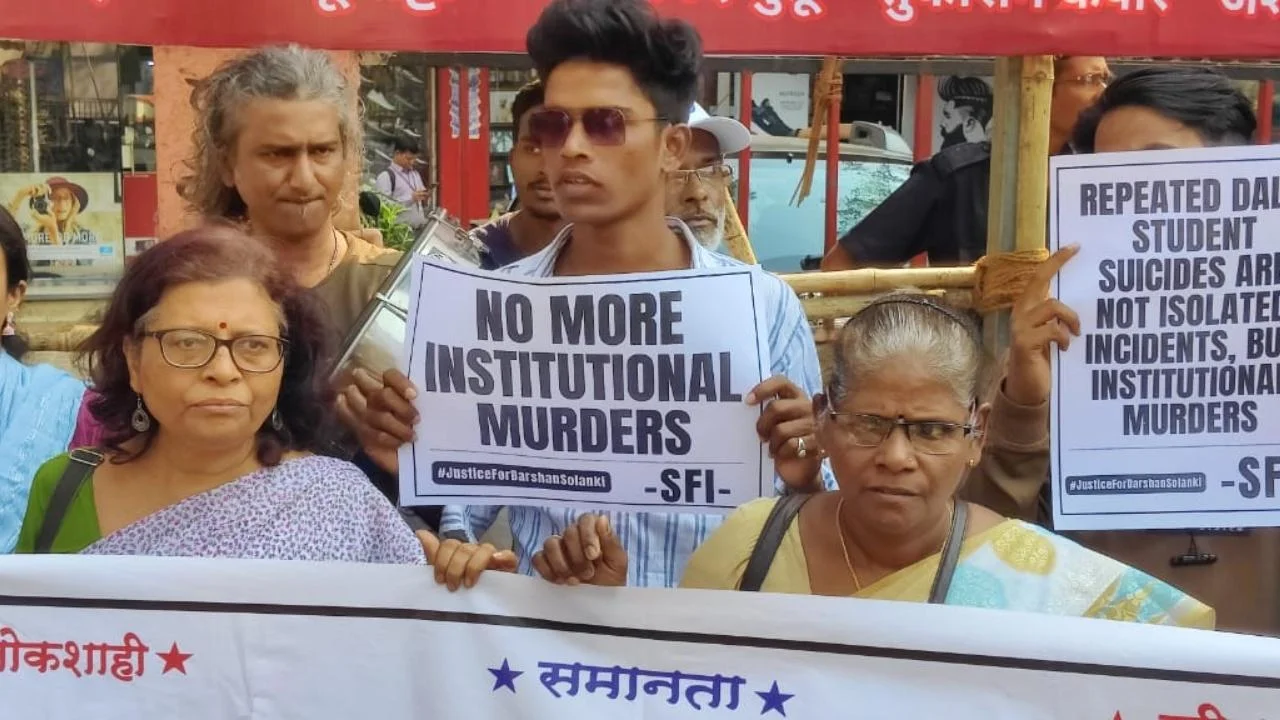Alma Matters: Inside the IIT Dream, is a three part Netflix documentary directed by Pratik Patra and Prashant Raj which attempts to delve into the world of the Indian Institute of Technology (IIT) Kharagpur, depicting some of the hard realities of the higher education system in our country.
The documentary brings together the testimonies of students and teachers from the academic year 2018-19 through the course of its three episodes.
Within the three episodes, the categorised segments help the audience to weave the different individual narratives into a single story. The story revolves around some of the larger themes such as overwhelming competition, inherent sexism, a fight to perceive identity, and an undying spirit to overcome challenges.
The perspective of making Alma Matters and depicting the inside life of the institution comes from the lens of IIT alumni. Both the directors and several crew members are alumni of the institution. The cinematic drone shots of the campus give a glimpse of its geographically secluded reality, removed from the hubbub of the city. The documentary captures its prime subjects in physical spaces like boys hostel rooms, classrooms, canteens and dhaabas, labs and playground areas.
It depicts stories of approximately 20 boys from different departments and halls, but the representation of women starts and ends with only 2 active voices. One of them is a sports captain talking about her gendered experience inside the university and the irony here is that there are no other stories of any other female students,or their experiences
Alma Matters attempts to be a progressive one by including voices on issues like rampant sexism in science, technology, engineering, and mathematics (STEM) colleges and the high rates of suicides in the most prestigious universities. However, it lacks a holistic image and original voices.
A question must be raised upon its credibility, when the issues like gender bias in a male dominated setting are explored half-heartedly, managing to only scratch the surface with its performative political correctness.

It depicts stories of approximately 20 boys from different departments and halls, but the representation of women starts and ends with only 2 active voices. One of them is a sports captain talking about her gendered experience inside the university and the irony here is that there are no other stories of any other female students, or their experiences.
Alma Matters treats women in a very typical but false way, as the camera focuses on women only when there is a need to address the elephant in the room i.e. gender equality. To bring the spotlight on the issue, opinions of several men have been taken into account regarding the 1:9 ratio as a concern but no other woman. There is a dangerously minimum initiative to involve women throughout the show.
Caste based discrimination has been a discoursed issue in the IITs. We have had a very recent example from IIT Kharagpur itself, where a teacher was caught abusing the SC/ST students in her online class, but the series does not bother to mention these marginalised experiences, narratives or voices
Alma Matters promises to portray genuine stories via documenting the reality and for that, the comprehensive representation of every class-caste-gender group should be a necessary requirement. It is significant to recognize that women, Dalit students and the differently abled have been ignored from the larger narrative of the story.
The majority of students who are there in the series as speakers are upper caste Hindu(s), only a few belong to upper caste Muslim and Christian communities. Caste based discrimination has been a discoursed issue in the IITs. We have had a very recent example from IIT Kharagpur itself, where a teacher was caught abusing the SC/ST students in her online class, but the series does not bother to mention these marginalised experiences, narratives or voices.

Alma Matters explores the anxieties around placements, classes, subject domains and future aspects, but it seems these are the concerns of the men in the university alone. The experiences of women seem like they vanished somewhere in the air of the sprawling campus. The stories, reflections, and the expectations about the whole process of placement among the students of an IIT is minimized and anchored within the boys hostel rooms.
There is absolutely no dialogical conversation between both the male and female students of the university. The divided representation puts men in power and depicts that females are overshadowed by the hard working males who are apparently weighed down with immense pressure. One should not take it as a whole picture as it is biased and compromised
There is a depiction of strong bonds and friendship inside boys’ halls/hostels. They are shown preparing for the last significant days in the campus, celebrating victories, and sharing their fears while enjoying a puff of their cigarettes or having beers. Women, on the other hand, look like people who share none of these sentiments or struggles and thereby deserve no screen time.
Also read: It Is High Time To Call Out The Misogyny In Our IIT Campuses
Hence, the show very conveniently ignores and avoids the representation and voices of women in their daily campus lives. As a compensation we have stills of women sitting over a rangoli, lighting diyas and caught in movement around hostel gates. By the end of the show it seems like women are considered to be active participants only when there is a need for their voice to be used for performative representation, but there is no space in the content where their struggles and stories intersect or align with the other students i.e. men.

There is absolutely no dialogical conversation between both the male and female students of the university. The divided representation puts men in power and depicts that females are overshadowed by the hard working males who are apparently weighed down with immense pressure. One should not take it as a whole picture as it is biased and compromised.
The makers or the alumni might argue that there were difficulties with the access to women’s halls/hostels, but one can not ignore the fact that those were not the only spaces captured. We see that none of the women featured are asked about their understanding regarding the suicides inside the campus. They are only mute spectators or participants in events like fests and cosplay.
Also read: Are College Fests A Space For Sexual Harassment On Campus?
This whole attempt of exclusion of voices and representation in a space like IIT Kharagpur is not merely laziness or a mistake, but a newly emerged and dangerous lens of ‘wokeness’. Alma Matters does not address the presence of women beyond an embouchure of feminism. Ironically, the show itself ends up promulgating the very stereotype it wanted to break or deconstruct – that the ratio 1:9 of women to men is dangerous.
Alas, Alma Matters makes it 1:10 through the show.
Isha is a postgraduate in Education from Ambedkar University, Delhi. Her M.A dissertation focuses on ‘The presence of visual graphics in textbooks of social science of elementary grades’. A former teacher, she is also an art enthusiast and presently conducts workshops for children and adult learners of visual arts. You may find her on Facebook and Instagram
Featured Image Source: Binged





Actually it was a very daunting task to shoot inside the girls hostel. As you can see this docu mostly revolved around the 4-5 guys of Nehru hall. Moreover those guys personally knew the makers very well, so shooting them was never a problem. There were 500 hrs of footage in total and most of them were of the Nehru hall, wouldn’t have been possible with the girls hall, very tough to get permission to shoot there. Somehow few fillers were managed, but that’s all to it.